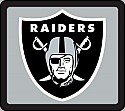
The Civil War was fought in over 10,000 places and it is nearly impossible for someone to remember every battle. The Battle of Picacho Pass in New Mexico Territory is one of the forgotten battles of the Civil War. Today my goal is to eductate my readers on this small battle.
In the spring of 1861 the Confederates claimed that the New Mexico Territory was theirs and support for the rebels by the small population supported their claim. The Federal government was anxious to prevent the claim and halt the spread of Confederate support. On August 15, 1862 a Union patrol commanded by Lieutenant James Barrett of the 1st California Cavalry, were conducting a sweep of the Picacho Pass area. They were searching for Confederates who were reported to be in the area. Barrett's offical orders were to find these rebels but not engage them until Union reinforcements arrived. Initally, Barrett and his men were met with success and they quickly rounded up three Confederate soldiers as prisoners. However, the Union troops failed to see that seven other Confederates were in the area and the men in butternut opened fire on the men in blue.
Union Lieutenant James Barrett waved his men forward against the remaining Confederate cavalry troopers, who laid down heavy fire, killing and wounding four more Union soldiers, including the impetuous young lieutenant. After withdrawing and regrouping, the Union cavalry continued trading shots with the Confederates until late afternoon, when they withdrew and slowly returned to the main body to the north.
The Confederates were commanded by Sherrod Hunter and the rebel success at Picacho Pass did not change the strategic realities of the situation. Hunters men retreated to Texas as the Northern ranks swelled in the area. The battle was itself a skirmish and pales in comparision to the battles at Vicksburg, Stones River, Shiloh, Gettysburg and Fredricksburg. In total just 26 men took part in the combat but it did mark the farthest west clash of arms in the Civil War, and the only site in the State of Arizona. The casualties of the fight, Lieutenant Barrett, Company A, 1st California Cavalry, shot in the neck, breaking his neck and dying instantly, Private George Johnson, Company A, 1st California, shot in the region of the heart, died within a few minutes, were killed on the site (referred to as the Battle Site) and their bodies were lying where they fell. Private William S. Leonard, (in Reports spelled Denerd) , Company D, 1st California Cavalry was mortally wounded, shot in the back, the ball passing upwards and exited his mouth. He died early the next morning. The wounded of Lieutenant Barrett's Detachment were as follows, Private William C. Tobin, Company D, 1st California Cavalry, was shot in the forehead, but the brasses of his hat deflected the bullet and left an ugly but not fatal wound, Corporal James Botsford, Co,pany A, wounded, and Private Peter Glenn, Company, were shot in the arm and shoulder, but either wounds were fatal. Reports does state which man was shot in the arm or the shoulder.
For modern photos of the battlefield and a good description go here http://www.civilwaralbum.com/misc6/picacho_pass1.htm
The offical park webpage is here: http://www.pr.state.az.us/Parks/parkhtml/picacho.html
Even more information and battle description are located here:
http://www.arizonacivilwar.com/html/body_history.html






